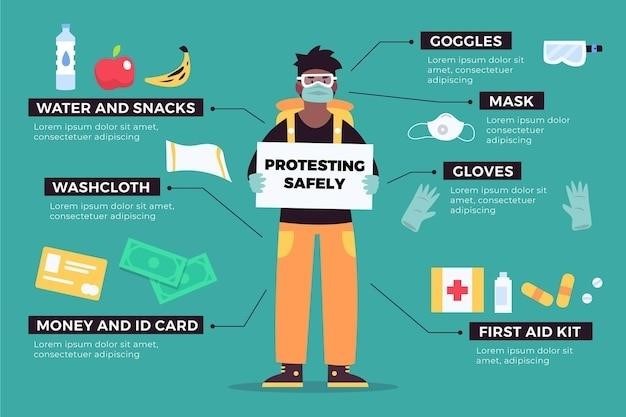chastity lynn jerk off instructions
Chastity Lynn Jerk Off Instructions⁚ A Comprehensive Guide
This guide explores Chastity Lynn’s popular JOI videos, analyzing her techniques, style variations, and audience appeal. We compare her work to others, examining criticisms and her impact on the adult film industry, projecting her future influence within the JOI genre.
Chastity Lynn’s JOI (Jerk Off Instruction) videos have gained significant popularity within the adult entertainment industry. These videos feature Lynn providing explicit instructions and encouragement to viewers as they masturbate. Her approach often involves playful interaction, incorporating elements of ASMR and suggestive dialogue. Online platforms like SpankBang and Pornhub host numerous videos showcasing her distinctive style. Many descriptions emphasize her blonde hair and pigtails, highlighting a cute and approachable persona that contrasts with the explicit nature of the content. The videos vary in length and explicitness, ranging from short clips to longer, more involved sessions. Common themes include handjobs, masturbation techniques, and personalized encouragement tailored to the viewer’s experience. The success of these videos reflects a growing demand for interactive and personalized adult content. The internet is flooded with mentions of her name alongside terms like “jerk off instructions,” “masturbation lessons,” and “ASMR.”
Popular Chastity Lynn JOI Scenes and Their Characteristics
While specific scene titles aren’t readily available from the provided text, common themes emerge in descriptions of Chastity Lynn’s JOI videos. Many feature her providing direct, explicit instructions for masturbation, often incorporating visual cues and suggestive dialogue. The “Pigtails and Lollipop” version, mentioned online, suggests a playful, innocent aesthetic contrasting with the explicit nature of the instructions. Scenes frequently involve close-ups of Lynn’s face, enhancing the personal connection with the viewer. Some descriptions allude to scenarios involving stepdads or other power dynamics, adding a role-playing element. The use of ASMR techniques is also implied, suggesting a focus on soft sounds and whispers to enhance the viewer’s experience. The recurring motif of encouraging the viewer to “jerk off” highlights the central focus of the videos⁚ guiding the viewer through the act of masturbation. The online mentions of handjobs and other interactions further illustrate the range of scenarios explored within her JOI work. The overall aesthetic often leans towards a cute, approachable image, creating a contrast between the performer’s appearance and the explicit nature of the content.
Variations in Chastity Lynn’s JOI Style and Presentation
Chastity Lynn’s JOI videos showcase a variety of styles and presentation techniques, catering to diverse preferences. Some scenes emphasize a playful, almost innocent approach, utilizing props like pigtails and lollipops to create a specific aesthetic. This contrasts with other content hinting at more dominant or power-dynamic scenarios, suggesting a range in her character portrayals. The level of directness in her instructions also varies; some videos might offer explicit, step-by-step guidance, while others might employ a more suggestive, teasing style. The use of ASMR techniques, indicated in online descriptions, suggests a focus on auditory stimulation to enhance the experience. Visual presentation also appears diverse, with some scenes possibly emphasizing close-ups of her face for a more intimate connection, while others might incorporate broader shots to create a different atmosphere. The length of videos likely also varies, with some shorter, focused clips and others potentially offering a longer, more drawn-out experience. This flexibility allows for a broad appeal to different viewers’ tastes and preferences within the JOI genre. The combination of these elements contributes to a diverse and adaptable style across her work.
The Role of Interaction and Encouragement in Chastity Lynn’s JOI Videos
Interaction and encouragement are central to Chastity Lynn’s JOI videos, aiming to create a personalized and engaging experience for the viewer. The online descriptions frequently highlight her playful interaction with the implied audience, using phrases like “help you jerk off” and “play the game with you,” suggesting a collaborative dynamic rather than a purely instructional one. This sense of participation is crucial in JOI, where the performer’s engagement is key to the effectiveness of the material. Her encouragement might take the form of verbal cues, possibly including suggestive comments and commands designed to stimulate arousal. The use of ASMR techniques, as mentioned in some online descriptions, further enhances this interactive element by focusing on auditory stimulation and creating a more intimate atmosphere. The visual presentation likely also plays a role in fostering interaction, with the performer’s expressions and gestures potentially serving to guide and encourage the viewer’s masturbatory activity. This combination of verbal, visual, and potentially auditory elements creates a multi-sensory experience designed to foster a sense of connection and enhance the overall effectiveness of the instructions. This personalized approach differentiates her content within the wider JOI landscape.
Analyzing the Effectiveness of Chastity Lynn’s JOI Techniques
Analyzing the effectiveness of Chastity Lynn’s JOI techniques requires considering several factors. Her popularity and the volume of online searches related to her name suggest a significant level of success in engaging her target audience. The frequent mentions of “jerk off instructions” and “masturbation encouragement” in online sources indicate a focus on providing clear and explicit guidance. The inclusion of ASMR techniques, as alluded to in some descriptions, potentially enhances the sensory experience and intensifies the viewer’s arousal. The descriptions often emphasize a playful and interactive approach, suggesting a personalized experience that moves beyond simple instructional videos. The use of visual cues, combined with verbal prompts and potentially ASMR elements, likely contributes to the effectiveness of her techniques. However, a comprehensive analysis would require a deeper examination of viewer feedback and engagement metrics, which are not readily available from the provided text. Quantitative data on viewership numbers and user reviews would offer a more objective assessment of her techniques’ efficacy in achieving arousal and satisfaction amongst her viewers. Qualitative data, such as user comments and reviews, would provide valuable insight into the subjective experiences and perceptions of her techniques.
Comparison with Other JOI Performers and Styles
While the provided text mentions Chastity Lynn in relation to JOI, it lacks sufficient detail for a robust comparison with other performers and styles. However, we can infer some potential distinctions. The frequent association of Chastity Lynn with terms like “pigtails” and “adorable blonde” suggests a specific aesthetic and persona that might differ from other JOI performers. Some descriptions highlight an interactive element, implying a departure from purely instructional videos towards a more engaging, personalized experience. This contrasts with performers who might focus solely on explicit instruction or a more detached presentation. Further, the mention of ASMR suggests a potential incorporation of sensory elements not universally employed in JOI. The limited information prevents definitive statements about stylistic differences. A comprehensive comparison would necessitate analyzing a broader range of JOI performers, comparing their techniques, presentation styles, and audience engagement strategies. This would include examining the types of instruction offered, the level of interaction with the viewer, the use of additional elements like ASMR or BDSM themes, and the overall tone and aesthetic of their content. Only then could we form a more complete understanding of Chastity Lynn’s place within the diverse landscape of JOI performers.
The Appeal of Chastity Lynn’s JOI Content⁚ Audience Demographics and Preferences
Chastity Lynn’s appeal within the JOI genre likely stems from a combination of factors hinted at in the provided text snippets. Her association with terms like “adorable,” “pigtails,” and “blonde” suggests a specific aesthetic that may attract a particular audience segment. This implies a preference for a certain visual style and personality type within the JOI community. The frequent mention of interactive elements, such as encouragement and personalized instructions, suggests an appeal to viewers seeking a more engaging and less impersonal experience compared to solely instructional videos. This personalized approach might cater to individuals who value a sense of connection or interaction with the performer. The repeated appearance of Chastity Lynn’s content across various platforms and the high view counts (like the “12590 views” mentioned) indicate a significant level of audience interest. However, determining precise demographic details like age range, gender, or specific preferences requires further research and analysis of viewer data, which is unavailable from the given source. Speculating further, her content may appeal to individuals who value specific fetishes or preferences reflected in the descriptions, though this is strictly conjecture without detailed viewer surveys or more comprehensive information. In conclusion, while the snippets provide hints, a thorough understanding of the demographics and preferences requires a more in-depth analysis of viewing patterns and audience feedback.
Impact of Chastity Lynn’s JOI Videos on the Adult Film Industry
Assessing Chastity Lynn’s precise impact on the adult film industry based solely on the provided text excerpts is challenging. The snippets reveal a significant online presence and viewer engagement, with mentions of numerous videos and high view counts. This suggests a contribution to the overall growth and popularity of the JOI subgenre, potentially influencing the demand for similar content and prompting other performers to adopt comparable styles or techniques. However, quantifying this impact requires more data, such as sales figures, industry rankings, or critical analyses of trends. The references to various platforms and websites where her videos are available highlight the potential for reaching a wide audience and impacting the distribution landscape within the adult entertainment sector. The repeated emphasis on “jerk off instructions” and interactive elements could signify a shift toward more personalized and participatory content, potentially influencing future video production strategies. The snippets don’t directly indicate broader industry-wide changes, though her success within the JOI niche strongly suggests a level of influence. To fully comprehend her contribution, further research into market trends, audience feedback, and the overall evolution of the JOI genre is necessary. Without additional context, definitively stating her impact remains speculative.
Criticisms and Controversies Surrounding Chastity Lynn’s JOI Work
The provided text offers limited insight into specific criticisms or controversies directly aimed at Chastity Lynn’s work. The nature of the JOI genre itself, however, inherently invites potential criticism. Some might argue that the explicit instructional nature of her videos could be considered overly explicit or promote unhealthy sexual behaviors. Concerns about the potential for objectification, exploitation, or the normalization of certain power dynamics within the performer-viewer relationship could also arise. The highly sexualized content might draw criticism from those who advocate for stricter regulations within the adult film industry or those who object to the portrayal of such material. Furthermore, depending on the specific content of her videos, accusations of promoting unrealistic sexual expectations or unhealthy sexual practices could surface. Without access to reviews, articles, or public commentary specifically targeting Chastity Lynn’s work, it’s impossible to definitively identify any prevalent criticisms. The absence of such explicit criticism in the provided text does not negate the possibility that such criticisms exist within broader discussions about JOI content or the adult film industry as a whole. Further research into online reviews and public opinion would be necessary to fully understand the controversies surrounding her work.
The Future of JOI and Chastity Lynn’s Potential Role
Predicting the future of the JOI genre and Chastity Lynn’s role within it requires careful consideration of several factors. The evolving technological landscape, particularly advancements in virtual reality and interactive streaming, could significantly alter the consumption and production of JOI content. Increased demand for personalized and immersive experiences might lead to a rise in customized JOI videos or interactive platforms where viewers have greater control over the narrative. Chastity Lynn’s future success will depend on her ability to adapt to these changes and maintain her relevance within a competitive market. Her potential lies in exploring innovative ways to engage her audience, perhaps through collaborations with other performers or by incorporating new technologies into her content. The broader acceptance and normalization of sex-positive media could also positively impact her career, potentially expanding her reach to a wider audience. However, challenges remain, including the potential for increased competition, evolving societal attitudes towards adult content, and the ever-present risk of saturation within the market. Ultimately, her future trajectory will depend on her creative vision, adaptability, and the ongoing evolution of the JOI genre itself.
Chastity Lynn’s Lasting Influence on the JOI Genre
Chastity Lynn’s contribution to the JOI genre extends beyond simple performance; she has shaped its aesthetic and interactive elements. Her distinctive style, characterized by a blend of playful encouragement and explicit instruction, has resonated with a significant audience; This impact is evident in the numerous imitators and the ongoing popularity of her videos. While the specifics of her techniques may be replicated, her unique personality and connection with viewers remain unparalleled. The lasting influence of Chastity Lynn lies not just in the technical aspects of her JOI work but also in the way she fostered a specific type of viewer engagement, one that transcends mere visual stimulation. Her videos have arguably influenced the overall tone and interaction within the JOI genre, setting a precedent for performers to cultivate a more personal and interactive relationship with their audience. This dynamic exchange, where instruction blends with intimacy, constitutes a significant contribution to the evolution of JOI, setting a standard for others to follow and potentially influencing future trends within the adult entertainment industry. Her legacy is therefore one of both technical innovation and a redefined level of audience engagement within the genre.


